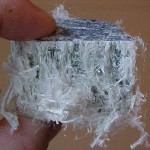 One of the hallmarks of scientific knowledge is the ability of researchers to replicate results. This has eluded scientists studying the health effects of exposure to nanomaterials for a variety of reasons. Among the factors are: the unavailability of standardized engineered nanomaterials for testing; differences among the many manufacturers of nanomaterials; lack of standard protocols; and variations in toxicity among particles due to the way the particles behave in certain situations.
One of the hallmarks of scientific knowledge is the ability of researchers to replicate results. This has eluded scientists studying the health effects of exposure to nanomaterials for a variety of reasons. Among the factors are: the unavailability of standardized engineered nanomaterials for testing; differences among the many manufacturers of nanomaterials; lack of standard protocols; and variations in toxicity among particles due to the way the particles behave in certain situations.
To attempt to resolve these problems, dozens of researchers from universities and NIOSH participated in what has been called the NanGo Consortium to conduct health studies on engineered nanomaterials using the same materials and developing standard protocols. The program was developed by the National Institute of Environmental Health Sciences (NIEHS).
The inter-laboratory, multi-investigator Consortium defined some of the challenges it faced as follows:
“In addition to dose, there are multiple factors that influence the toxicity of ENMs, including surface characteristics, charge, and shape. Size alone is a major determinant as many bulk materials that are relatively inert become toxic when produced at the nanoscale. . . . Determination of which ENMs will present the greatest potential threat to human health depends on relative toxicity, and on the potential for exposure.” (pp. 5-6)
The Consortium conducted two broad sets of studies. The first involved rats and mice exposed to carbon nanotubes and titanium dioxide, and measured pulmonary inflammation. The Consortium concluded: “The results presented and discussed herein demonstrate that a standard protocol can be used across multiple laboratories to yield similar results in the pulmonary inflammatory response.” (pp. 6-7) The researchers are optimistic that with this start, there will be opportunities to determine the impact that exposure to nanomaterials may have on human at the preventive stage.
The second study examined the effects of carbon nanotubes, titanium dioxide, and zinc oxide in vitro in laboratory container studies. The Consortium noted: “A significant finding of this study was that the development of harmonized in vitro assay protocols made it possible to achieve reproducible results among different laboratories.” (p. 16) This study, the Consortium concluded, “provides new information on the relative in vitro bioactivity of a large group of diverse ENM that can be used to inform future strategies for in vitro testing and predicting in vivo outcomes.” (p. 6)
These studies move researchers in the direction of being able to replicate results and ultimately draw reliable conclusions about the potential health hazards of exposure to nanomaterials, leading to effective regulation.
The NIEHS NanoGo Consortium reports are available at
http://ehp.niehs.nih.gov/wp-content/uploads/121/4/ehp.1205693.pdf
http://ehp.niehs.nih.gov/wp-content/uploads/121/4/ehp.1306561.pdf
 An interesting and potentially revolutionary development in magnetic storage of data was announced a couple of weeks ago. Researchers at I.B.M. have reported the development of a new class of nanomaterials that could lead to the development of new, significantly smaller memory chips and disk drives that will both hold vast amounts of information and use less power than the current class of silicon chips. The report (Loth, Baumann, Lutz, Eigler, and Heinrich, Bistability in Atomic-Scale Antiferromagnets) appears in the journal Science at Vol. 335, no. 6065, pp. 196-99 (Jan. 13, 2012), and has been widely reported in the news media. There is much excitement over this development, both for its inherent promise for data storage and for its potential in other areas. Analysts have suggested that other new nanomaterials may be forthcoming using some of the same general methodologies and approaches of these researchers.
An interesting and potentially revolutionary development in magnetic storage of data was announced a couple of weeks ago. Researchers at I.B.M. have reported the development of a new class of nanomaterials that could lead to the development of new, significantly smaller memory chips and disk drives that will both hold vast amounts of information and use less power than the current class of silicon chips. The report (Loth, Baumann, Lutz, Eigler, and Heinrich, Bistability in Atomic-Scale Antiferromagnets) appears in the journal Science at Vol. 335, no. 6065, pp. 196-99 (Jan. 13, 2012), and has been widely reported in the news media. There is much excitement over this development, both for its inherent promise for data storage and for its potential in other areas. Analysts have suggested that other new nanomaterials may be forthcoming using some of the same general methodologies and approaches of these researchers. The National Institute of Standards and Technology (NIST) has issued what is being touted as the world’s first reference material for single-wall carbon nanotube soot. In its statement, NIST calls single-wall carbon nanotubes (SWCNT) “perhaps the archetype of all nanoscale materials.” The promise of SWCNT in industrial use is great (NIST chemical engineer Jeffrey Fagan stated that “full development of these materials should enable lighter, stronger materials, as well as improve many technologies from sensors to electronics and batteries”). But as with most things, there’s a catch.
The National Institute of Standards and Technology (NIST) has issued what is being touted as the world’s first reference material for single-wall carbon nanotube soot. In its statement, NIST calls single-wall carbon nanotubes (SWCNT) “perhaps the archetype of all nanoscale materials.” The promise of SWCNT in industrial use is great (NIST chemical engineer Jeffrey Fagan stated that “full development of these materials should enable lighter, stronger materials, as well as improve many technologies from sensors to electronics and batteries”). But as with most things, there’s a catch. I have written
I have written  In a June 9, 2011, memorandum to the heads of U.S. executive departments and agencies, entitled Policy Principles for the U.S. Decision-Making Concerning Regulation and Oversight of Applications of Nanotechnology and Nanomaterials, the White House confirmed its commitment to a “science-based” approach to health and safety matters related to nanotechnology. The memorandum issued from the Office of Science and Technology Policy, the Office of Management and Budget, and the Office of the U.S. Trade Representative. The memorandum described its approach as
In a June 9, 2011, memorandum to the heads of U.S. executive departments and agencies, entitled Policy Principles for the U.S. Decision-Making Concerning Regulation and Oversight of Applications of Nanotechnology and Nanomaterials, the White House confirmed its commitment to a “science-based” approach to health and safety matters related to nanotechnology. The memorandum issued from the Office of Science and Technology Policy, the Office of Management and Budget, and the Office of the U.S. Trade Representative. The memorandum described its approach as Listening to the speakers at the American Bar Association section webinar on the subject of “Nano Governance: The Current State of Federal, State, and International Regulation,” discussed in
Listening to the speakers at the American Bar Association section webinar on the subject of “Nano Governance: The Current State of Federal, State, and International Regulation,” discussed in 
 On November 30, 2010, the American Industrial Hygiene Association (AIHA), in commenting on the
On November 30, 2010, the American Industrial Hygiene Association (AIHA), in commenting on the 